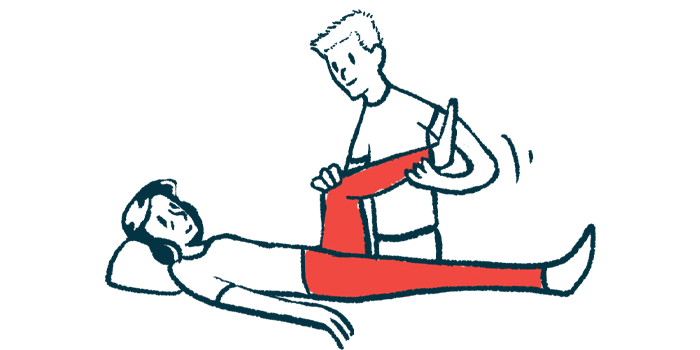Weak Trunk Muscles, Spine Problems Need Early Attention in SMA

Children with spinal muscular atrophy (SMA) who have spine deformities or weak trunk muscles are more likely than others to have substantial limits to functional abilities and life activities, a study in patients ages 6 months to 15 years reported.
Strengthening trunk muscles through regular exercise and physical therapy programs, and preventing spine problems like scoliosis should be priorities in treating SMA children, its investigators said.
Researchers noted recent advances in disease-modifying treatments for SMA, but emphasized that a “deterioration or lack of improvement in the [child’s] functional status … may result from the progression of scoliosis, intensification of chest deformities, or increasing contractures.” These “factors have not been taken into account” in studies of therapy effectiveness, they wrote, which regard “motor skills as the most important ones.”
Their study, “Motor Function of Children with SMA1 and SMA2 Depends on the Neck and Trunk Muscle Strength, Deformation of the Spine, and the Range of Motion in the Limb Joints,” was published in International Journal of Environmental Research and Public Health.
Muscle weakness and poor motor skills are common to people with this neuromuscular disease. How such limitations translate into functional differences in patients’ day-to-day life, however, is less understood. Motor function was generally defined in this study as “the quality of everyday functioning.”
Scientists in Poland conducted a battery of assessments on 27 young children and adolescents: 19 with SMA type 1, and eight with type 2 disease. One child was able to walk, 13 could not walk but could sit independently, and 13 could not sit independently. Scoliosis, or atypical sideways curvature of the spine, was identified in 16 children.
Several functional tests looked at different parts of the body, like measuring the strength of individual muscles and assessing the range of motion in joints.
A statistical analysis was then performed to look for associations between these individual measurements and the children’s overall motor function, as measured with one of two standardized assessments: the Children’s Hospital of Philadelphia Infant Test of Neuromuscular Disorders (CHOP INTEND), or the Hammersmith Functional Motor Scale Expanded (HFMSE).
Results showed several noteworthy associations. For example, children with a lower range of motion in certain joints, particularly the hips, were likely to have poorer motor function. Motor abilities also tended to be worse in children who had more severe contractures (permanent muscle tightening) in their legs.
According to the researchers, these findings suggest that “the limitation of the range of motion in the joints of the lower limbs affects the motor skills of patients with SMA and should be considered as part of the assessment of motor function.”
Overall muscle strength was not significantly linked with motor function. However, children with poorer function also tended to have weaker muscles in the neck and trunk.
“This points to the need for treatment programs to include exercises to strengthen the muscles of the neck and trunk, to use stretching exercises, and to regularly evaluate these functions,” the researchers wrote.
A particularly strong association was noted between poorer motor function and scoliosis. Physical abnormalities in the chest and pelvis also were tied to lesser functional abilities.
“The results of this study show a strong relationship between [motor function] and the size of the scoliosis, severity of chest deformity, and oblique position of the pelvis,” the researchers wrote. “This means that the deformation of the spine, chest, and pelvis, which increases with age, may limit the functioning of the child.”
Study findings “confirm the validity of the guidelines for the care of patients with SMA, which include stretching, using strengthening exercises, training of daily activities, stimulating breathing, and appropriate positioning,” the team concluded. “It is important to systematically assess the musculoskeletal system and to implement early prevention aimed at preventing scoliosis and contractures, as well as training to strengthen the muscles.”
In fact, the team suggests that “preventing the development of scoliosis and the accompanying changes in the musculoskeletal system should be considered one of the main goals of treatment of children with SMA.”
Given the evident importance of such care in this small study’s findings, the researchers emphasized that “in the future, it is worth conducting studies in larger and specific age groups.”








